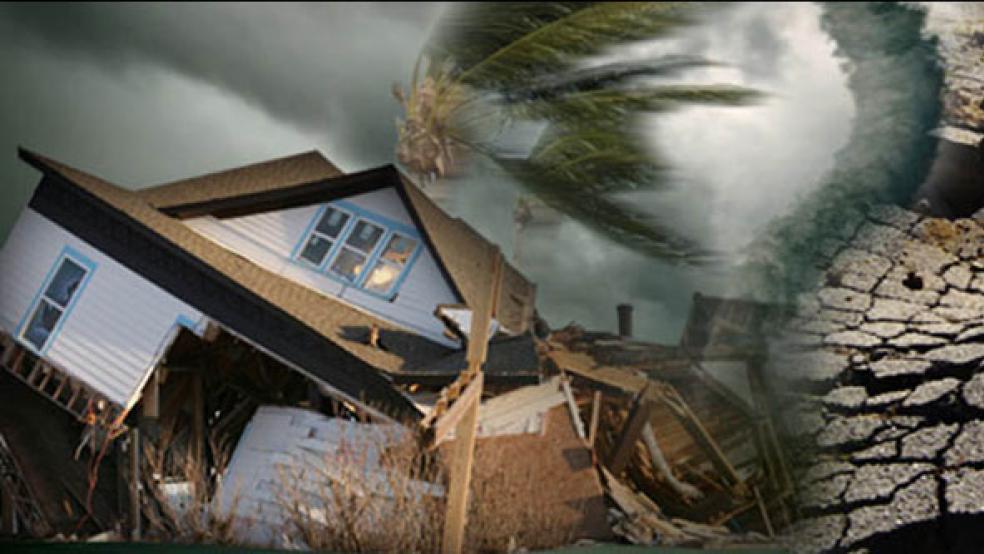Climate change is yielding more than hideous tornadoes, massive storm surges, and devastating heat waves. It’s giving us a new vocabulary, built on arcane words and phrases that newscasters introduce into every language.
Most have heard of El Niño, a Christmas present of warm water formed around Ecuador. But when the word “derecho” blasted across the screen yesterday, we had to learn more: "What on earth is a derecho?"
Simply put, a derecho is a straight-line storm (in contrast to rotational storms such as tornadoes). The derecho moves forward at constant and furious speeds and is known to hit suddenly and carry with it fierce rain, frequent thunder and lightning.
The Washington Post reported this morning that federal agencies are offering an unscheduled leave day to brace for the storm that, meteorologists claim, could turn into a derecho later in the week.
RELATED: A Rising Tide of Natural Disasters As Climate Changes
In the wake of the recent Oklahoma tornado, and other extreme weather events across the world, any weather warning is liable to furrow a few brows.
To qualify as a derecho, a storm has to carry with it winds of at least 58 mph, and be at least 240 miles long. They're capable of speeds much faster than that – there have been recorded derechos that have reached speeds of 130mph.
Derechos are known to strike suddenly, building speed and toppling trees within minutes. Unlike tornadoes, which are localized events, derechos are known to cover a large area. A derecho in June 2012 left 3.7 million Midwesterners without power.
While it's not a sure thing that the thunderstorm moving across the eastern United States will officially be classified as a derecho, any severe weather is still something to be worried about. Stay safe, stock up on supplies, and don't take any unnecessary risks.
So what’s the next weather word or phrase that we’ll have to learn? Here’s a list from The Farmer's Almanac:
Dust Devil: A rapidly rotating column of air that swirls dust, debris and sand to great heights. It’s caused by superheated air above a sun-baked ground that rises into cooler air. Sometimes also called a whirling dervish, dancing devil or sun devil.
Green Flash: No, it’s not a superhero, though it sounds like one. Green flashes (or green rays) are green colorations that occur shortly after sunset or before sunrise.
Mackerel Sky: A formation of cirrocumulus or altocumulus clouds that resemble the pattern of scales on a mackerel’s back. Sailors used to say: “Mackerel sky, mackerel sky. Never long wet and never long dry,” since its appearance signaled stormy weather. Other name: buttermilk sky.
Gully Washer: A very heavy downpour that causes flash flooding when ditches (or gullies) overflow.
Mare’s Tail: A formation of cirrus clouds that are wispy and stretch across the sky like a mare’s tail blowing in the wind.
Indian Summer: A period of abnormally mild weather in late autumn or early winter, usually after the first frost. Early colonists used the word “Indian” to mean “false,” so an Indian Summer would be a false summer.
Snow Eater: A term to describe warm dry wind that blows over a snowy terrain and melts the snow. Usually used in the Rockies.
– from The Farmers’ Almanac by Kristen Hewitt



